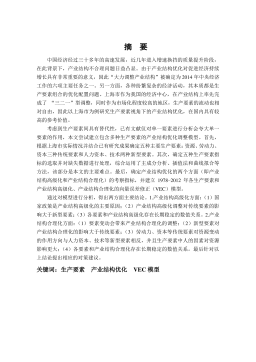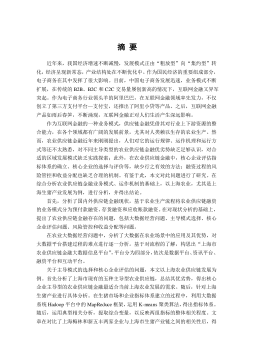舆论动力学理论及其应用
I摘要作为社会系统的一个研究方法,舆论动力学主要研究社会系统中由于个体之间决策的影响与外界公共信息的影响,人群中对某些特定的事件或事物所持的不同观点的形成和演化等现象,并包括观点一致性与多样性的保持等问题。在社会现象的大规模数据分析基础上,建立了不同的数据模型,将舆论进行了量化,如人员数目等。概率论的思想在舆论动力学中得到了广泛的应用,使数学模型更加接近现实。在这些数学模型中,对于网络的拓扑结构的不同构筑可以得出不同的结果,这也说明了舆论的产生与演化具有一定的复杂性。本文系统分析了不同的舆论动力学模型,追溯了其发展历史,并对不同模型间的不同与联系进行了重点分析,做出了相应的比较。这对于将来的研...
相关推荐
-
我国基层财政困难的制度成因分析与对策研究VIP免费

 2024-09-20 34
2024-09-20 34 -
我国煤电产业链纵向交易合约机制研究VIP免费

 2024-09-20 28
2024-09-20 28 -
生产要素视角下的上海市产业结构优化研究VIP免费

 2025-01-09 7
2025-01-09 7 -
我国银行业结构与经济结构关系研究VIP免费

 2025-01-09 7
2025-01-09 7 -
大数据视角下农业供应链金融研究VIP免费

 2025-01-09 6
2025-01-09 6 -
跨国大型综合超市的规划研究VIP免费

 2025-01-09 7
2025-01-09 7 -
跨境电商农产品质量安全问题研究VIP免费

 2025-01-09 8
2025-01-09 8 -
世界市场的虚拟化与我国国际电子商务发展方向研究VIP免费

 2025-01-09 10
2025-01-09 10 -
中国政府对电力行业的价格规制问题研究VIP免费

 2025-01-09 15
2025-01-09 15 -
中小企业信息化系统集成技术研究VIP免费

 2025-01-09 18
2025-01-09 18
相关内容
-

跨国大型综合超市的规划研究
分类:高等教育资料
时间:2025-01-09
标签:无
格式:PDF
价格:15 积分
-

跨境电商农产品质量安全问题研究
分类:高等教育资料
时间:2025-01-09
标签:无
格式:PDF
价格:15 积分
-

世界市场的虚拟化与我国国际电子商务发展方向研究
分类:高等教育资料
时间:2025-01-09
标签:无
格式:PDF
价格:15 积分
-

中国政府对电力行业的价格规制问题研究
分类:高等教育资料
时间:2025-01-09
标签:无
格式:PDF
价格:15 积分
-

中小企业信息化系统集成技术研究
分类:高等教育资料
时间:2025-01-09
标签:无
格式:PDF
价格:15 积分





